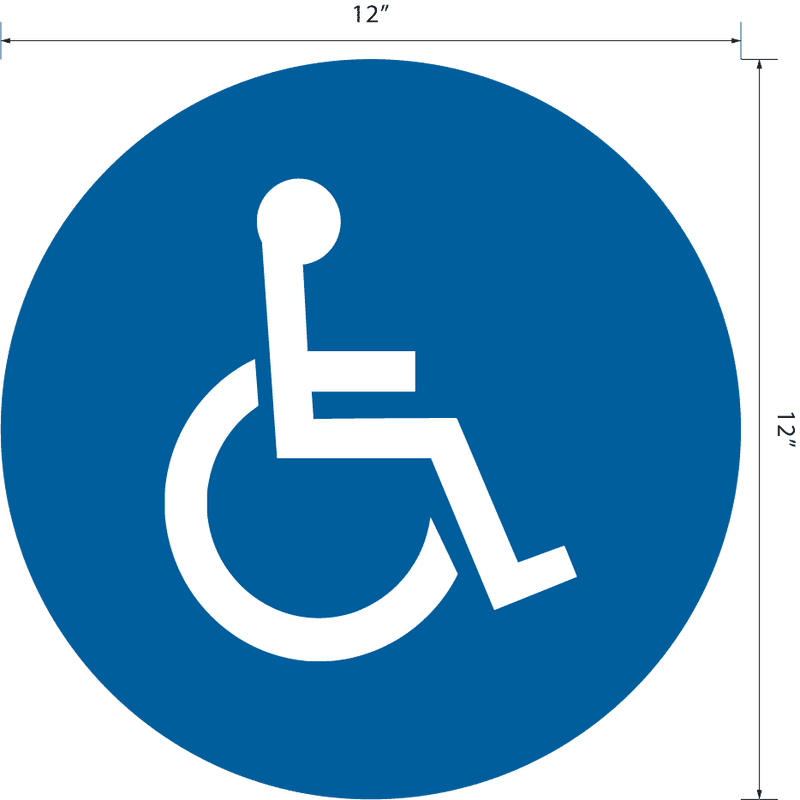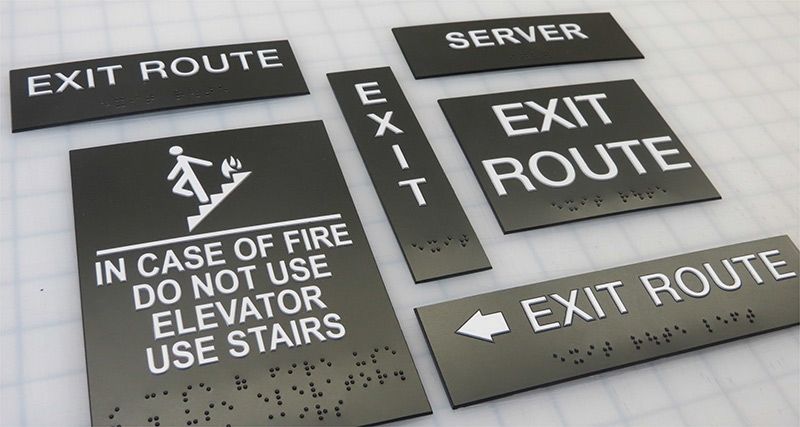Customizing ADA Signs to Fulfill Your Specific Requirements
Customizing ADA Signs to Fulfill Your Specific Requirements
Blog Article
Exploring the Secret Attributes of ADA Signs for Enhanced Access
In the realm of access, ADA signs act as silent yet effective allies, making sure that rooms are comprehensive and accessible for individuals with impairments. By integrating Braille and tactile aspects, these signs break obstacles for the aesthetically impaired, while high-contrast color pattern and understandable typefaces cater to diverse aesthetic demands. Their calculated positioning is not arbitrary however instead a calculated effort to promote seamless navigating. Yet, past these features exists a deeper narrative regarding the advancement of inclusivity and the recurring dedication to creating equitable spaces. What a lot more could these indications indicate in our pursuit of global access?
Value of ADA Compliance
Making sure conformity with the Americans with Disabilities Act (ADA) is essential for fostering inclusivity and equal accessibility in public spaces and workplaces. The ADA, passed in 1990, mandates that all public facilities, companies, and transport solutions accommodate individuals with handicaps, guaranteeing they delight in the very same rights and possibilities as others. Compliance with ADA requirements not just satisfies legal commitments however likewise enhances an organization's online reputation by showing its dedication to diversity and inclusivity.
One of the vital facets of ADA compliance is the implementation of obtainable signage. ADA signs are made to make certain that individuals with disabilities can easily browse via areas and structures.
In addition, adhering to ADA policies can mitigate the threat of legal effects and potential penalties. Organizations that stop working to follow ADA guidelines may deal with penalties or lawsuits, which can be both financially troublesome and destructive to their public image. Hence, ADA compliance is integral to cultivating an equitable environment for everybody.
Braille and Tactile Components
The unification of Braille and responsive components right into ADA signs symbolizes the concepts of access and inclusivity. These features are crucial for individuals that are blind or aesthetically damaged, allowing them to navigate public spaces with higher self-reliance and confidence. Braille, a responsive writing system, is vital in providing composed information in a format that can be quickly viewed through touch. It is commonly placed below the equivalent message on signs to make certain that individuals can access the info without aesthetic aid.
Tactile elements extend past Braille and consist of increased personalities and icons. These parts are created to be discernible by touch, permitting individuals to recognize area numbers, toilets, exits, and various other important areas. The ADA establishes details guidelines regarding the dimension, spacing, and positioning of these tactile components to optimize readability and ensure consistency throughout different atmospheres.

High-Contrast Color Pattern
High-contrast shade systems play an essential duty in improving the visibility and readability of ADA signs for individuals with visual problems. These plans are necessary as they make best use of the distinction in light reflectance between message and history, making certain that indicators are easily discernible, even from a distance. The Americans with Disabilities Act (ADA) mandates making use of specific shade contrasts to suit those with limited vision, making it a vital facet of compliance.
The efficiency of high-contrast colors depends on their capability to attract attention in various illumination conditions, including poorly lit environments and areas with glare. Generally, dark text on a light history or light message on a dark background is used to attain optimal comparison. Black text on a yellow or white history gives a stark aesthetic distinction that helps in fast recognition and comprehension.

Legible Fonts and Text Size
When taking into consideration the design of ADA signs, the option of legible font styles and ideal message size can not be overstated. These elements are critical for guaranteeing that indications come to people with aesthetic disabilities. The Americans with Disabilities Act (ADA) mandates that font styles need to be not italic you could try here and sans-serif, oblique, script, very attractive, or of unusual type. These demands help guarantee that the text is conveniently legible from a distance and that the personalities are appreciable to varied audiences.
According to ADA guidelines, the minimal message height need to be 5/8 inch, and it should boost proportionally with seeing distance. Uniformity in text size contributes to a cohesive visual experience, assisting individuals in navigating environments successfully.
Moreover, spacing in between letters and lines is essential to readability. Sufficient spacing prevents characters from showing up crowded, improving readability. By sticking to these standards, developers can substantially improve accessibility, making sure that signs offers its intended function for all individuals, no matter of their visual capabilities.
Effective Placement Techniques
Strategic placement of ADA signs is vital for optimizing ease of access and making certain compliance with legal requirements. Effectively positioned indications assist people with impairments successfully, promoting navigation in public areas. Secret factors to consider include distance, presence, and height. ADA guidelines state that indicators should be installed at an elevation in between 48 to 60 inches from the ground to company website ensure they are within the line of sight for both standing and seated individuals. This typical height variety is essential for inclusivity, allowing mobility device customers and people of varying elevations to access information effortlessly.
Additionally, indicators should be placed surrounding to the latch side of doors to allow very easy identification prior to entrance. Consistency in indication placement throughout a center improves predictability, reducing complication and improving total individual experience.

Verdict
ADA indicators play an essential role in advertising accessibility by incorporating attributes that attend to the requirements of people with disabilities. These aspects collectively cultivate a comprehensive environment, emphasizing the importance of ADA conformity in making certain equivalent access for all.
In the realm of ease of access, ADA signs serve as silent yet powerful allies, ensuring that spaces are accessible and comprehensive for people with disabilities. The ADA, enacted in 1990, mandates that all public centers, employers, and transportation solutions suit people with disabilities, ensuring they enjoy the exact same legal rights and opportunities as others. ADA Signs. ADA indications are designed to make sure that people with impairments can conveniently browse via buildings and areas. ADA guidelines specify that indications need to be installed at an elevation in between 48 to 60 inches from the ground to ensure they are within the line of view for both standing and seated people.ADA signs play a vital duty in advertising access by integrating attributes that resolve the requirements of individuals with disabilities
Report this page